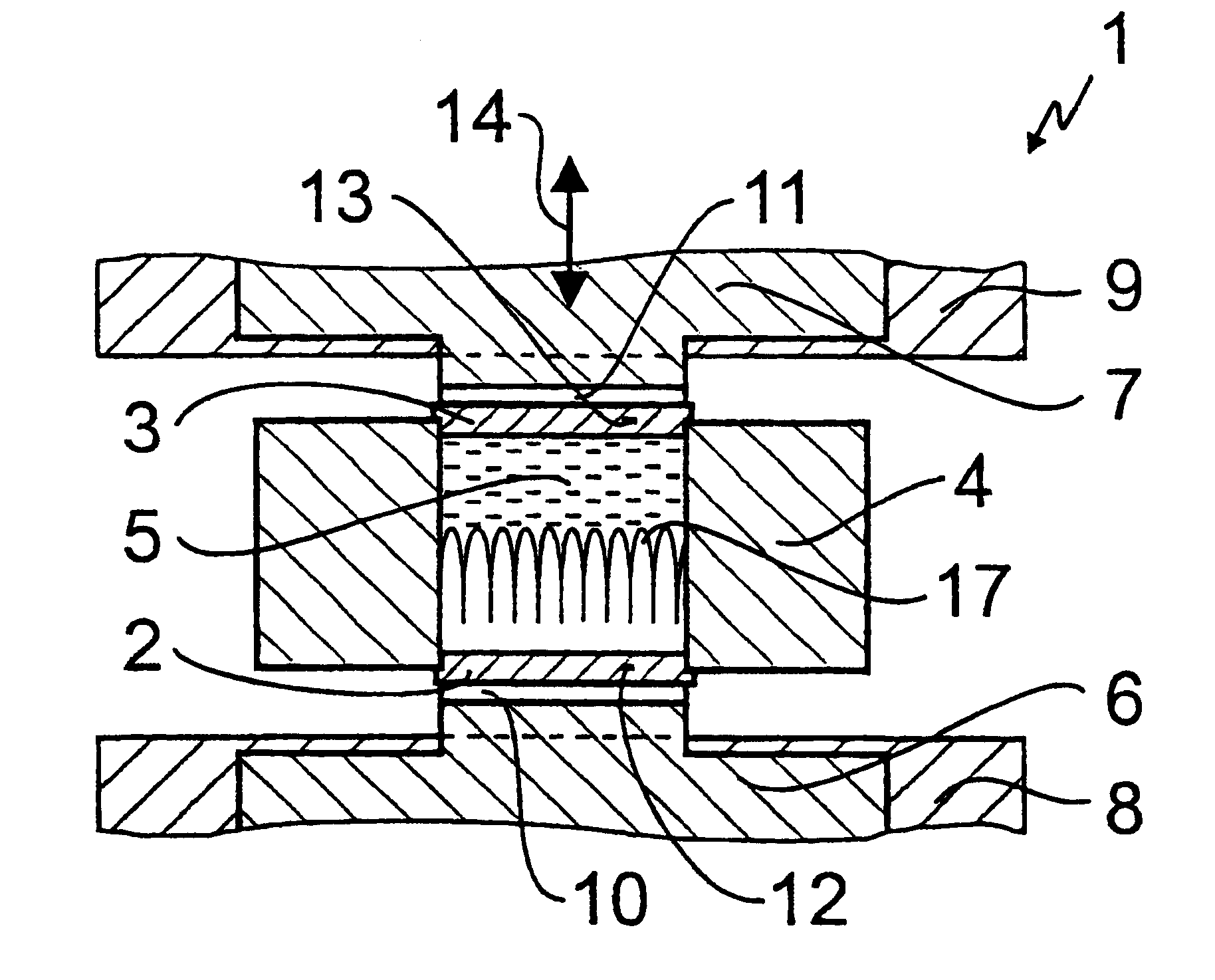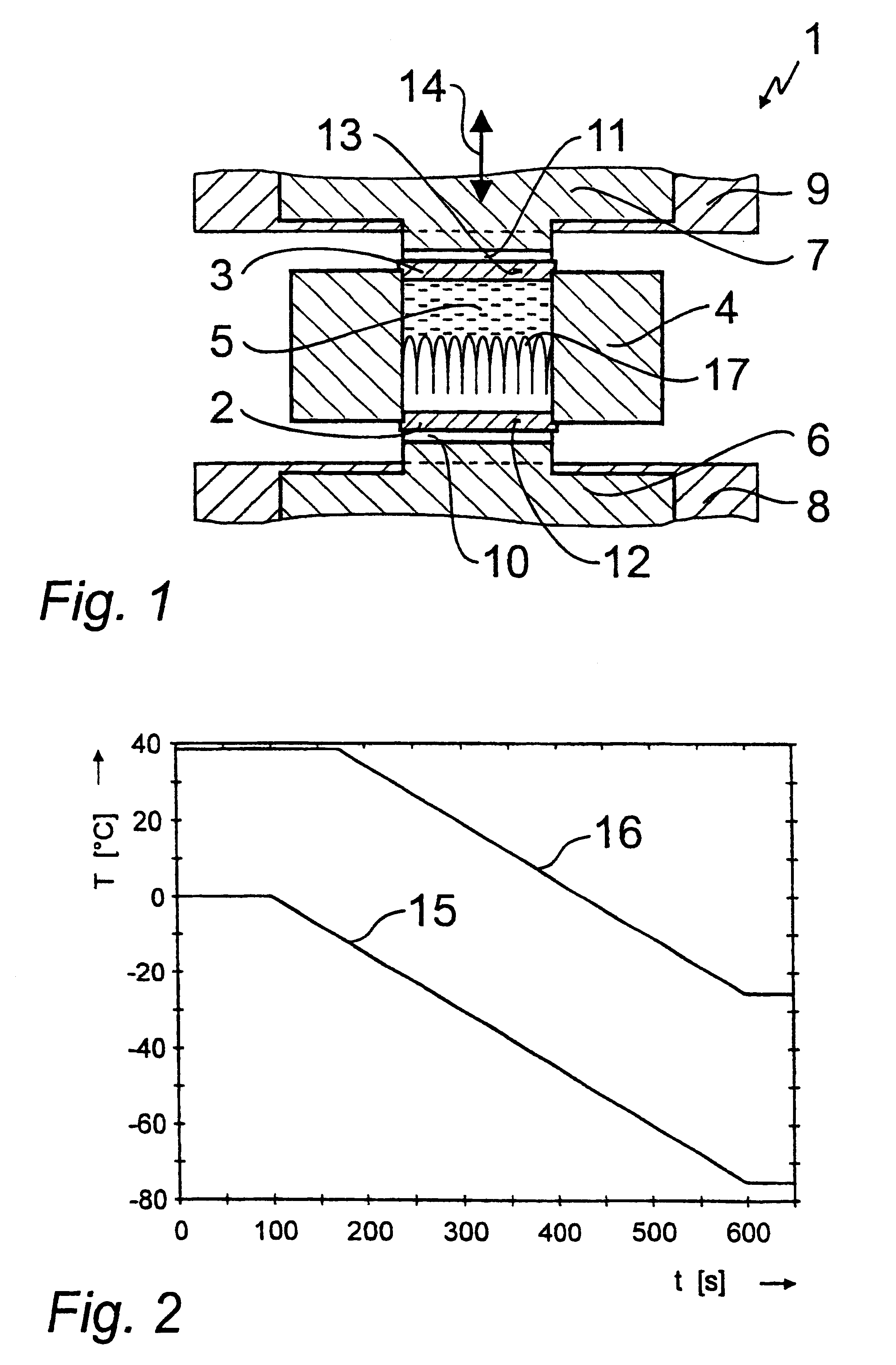Method for producing porous structures
a technology of porous structures and porous surfaces, applied in biochemistry equipment, biochemistry equipment and processes, lighting and heating equipment, etc., can solve the problems of obstructing freeze-drying, the degree of porosity inside the product,
- Summary
- Abstract
- Description
- Claims
- Application Information
AI Technical Summary
Benefits of technology
Problems solved by technology
Method used
Image
Examples
example 1
6.1 Example 1
Production of a Collagen Sponge with Homogeneously Distributed Collagen Fibers with Random Orientation
In this example, a collagen sponge without a redistribution of the collagen fibers during the freezing process (c.f. FIG. 5) is produced by the following method:
The basic collagen suspension (5) is inserted between the upper (13) and lower (12) temperature controlled surface of FIG. 1. The thickness of the collagen dispersion is 10 mm, the surface area is currently 83 mm.times.83 mm. The sample is laterally surrounded by a PTFE frame (4). The initial surface temperatures (warmer surface 37.degree. C., colder surface approximately 0.degree. C.) are shown in FIG. 2. After an initial temperature equilibration, the colder surface was cooled at a rate of -9.degree. C. / min.
After a temperature gradient of 50.degree. C. / cm between the lower and upper surface was established, both surfaces were cooled at the same cooling rate of -9.degree. C. / min until the lower surface temperat...
example 2
6.2 Example 2
Production of a Collagen Sponge with a Homogeneous Pore Size and Structure
Preparation of collagen sponges with a porous structure according to the sketch in FIG. 6 is enhanced by providing a significant constitutional supercooling ahead of the ice front. For this purpose suitable solutes may be added. In this example we added 3.8 wt % acetic acid to the basic collagen dispersion mentioned in Example 1. The dispersion was then centrifuged for 10 min at 225 g to remove air bubbles. The further processing of the collagen dispersion was identical to Example 1. However, due to the additional component and the chosen freezing parameters a cellular crystallization structure as shown in FIG. 6 was achieved, and the collagen fibers were not incorporated into the growing ice crystals but were rejected. The fibers were highly concentrated within the channels between the ice crystals.
During freeze-drying, which was also performed as in Example 1, the water was removed and open poro...
PUM
| Property | Measurement | Unit |
|---|---|---|
| Pressure | aaaaa | aaaaa |
| Temperature | aaaaa | aaaaa |
| Pressure | aaaaa | aaaaa |
Abstract
Description
Claims
Application Information
 Login to View More
Login to View More - R&D
- Intellectual Property
- Life Sciences
- Materials
- Tech Scout
- Unparalleled Data Quality
- Higher Quality Content
- 60% Fewer Hallucinations
Browse by: Latest US Patents, China's latest patents, Technical Efficacy Thesaurus, Application Domain, Technology Topic, Popular Technical Reports.
© 2025 PatSnap. All rights reserved.Legal|Privacy policy|Modern Slavery Act Transparency Statement|Sitemap|About US| Contact US: help@patsnap.com



